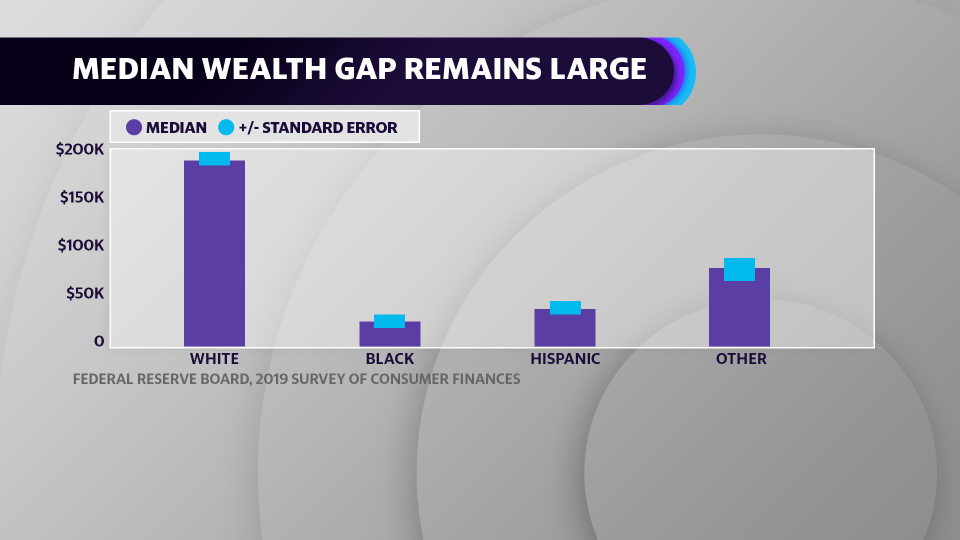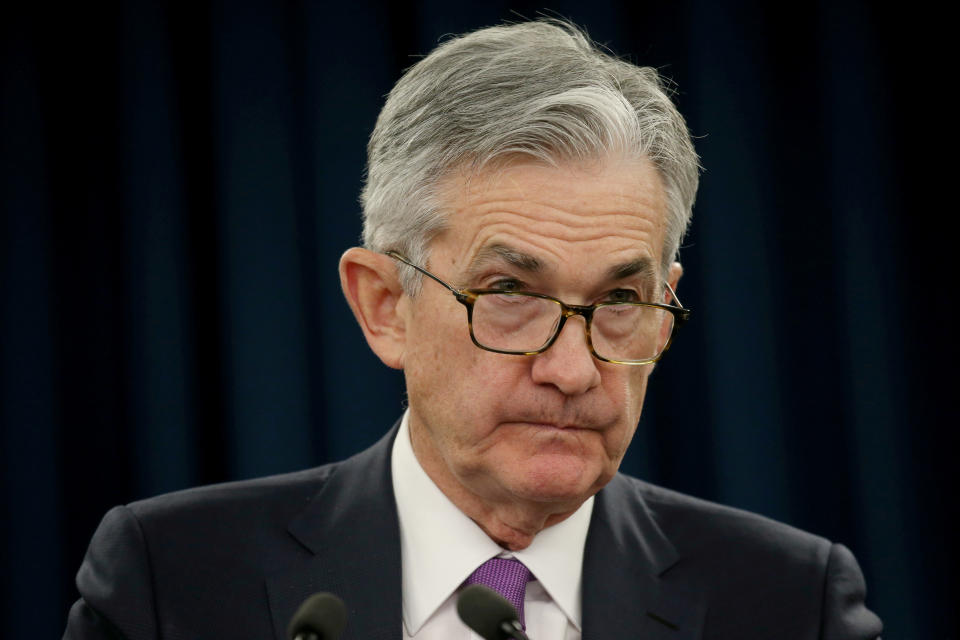Fed survey: Racial wealth gaps little changed since 2016
New survey data from the Federal Reserve shows that the racial wealth gap changed little since 2016, with the typical white family having eight times the wealth of the typical Black family in the United States.
In its 2019 Survey of Consumer Finances, white families were reported to have had a median wealth level of $188,200, substantially larger than the median Black family’s wealth level of $24,100. Asian, American Indian, Alaska Native, Hispanic, Native Hawaiian, Pacific Islander, and multiracial groups in the survey also reported lower wealth levels than white families.

The survey notes that growth rates in wealth-holding for Black and Hispanic families (33% and 65%, respectively) were faster than that of white families (3%) from 2016 to 2019.
But with Black and Hispanic wealth levels historically so far below white wealth levels, the survey noted that the faster growth rates had “only resulted in modest changes in the gaps in wealth.”
A Fed summary of the survey added that the chasm is partly attributable to higher homeownership, inheritances, and participation in retirement accounts among white families compared to Black and Hispanic families.
The survey was conducted before the onset of the COVID-19 pandemic, but the disparate impact of the virus risks further widening the racial wealth gap. Not only are Black communities disproportionately affected by the virus itself, but Black communities have also experienced steeper job losses and greater risks of not being able to meet rent amid the economic fallout.
As of August, the unemployment rate for whites was at 7.3% but the Black unemployment rate remained at 13.0%.

‘Commitment to diversity and racial justice’
The Fed has faced pressure over recent months to pay closer attention to the racial wealth gap when making decisions about where to steer the U.S. economy with its monetary policy.
Last week, in testimony to the Senate Banking Committee, Fed Chairman Jerome Powell insisted that the Fed has been “outspoken on our commitment to diversity and racial justice.”
But the likes of Sen. Elizabeth Warren, D-Mass., have advocated for expanding the central bank’s Congressional mandate to prioritize “the elimination of disparities across racial and ethnic groups” in its policymaking.
Powell and his colleagues at the central bank have said their actions prior to the COVID-19 crisis illustrated their focus on economic inequality. Once fearing inflationary pressures from low unemployment, the Fed changed its thinking to allow the labor market to tighten further.
“We were hearing from minority — low- and moderate-income and minority communities that this was the best labor market they’d seen in their lifetime,” Powell said in April, looking back on pre-pandemic levels of employment.
The survey corroborates that Black and Hispanic families were seeing faster growth, although the gap remains wide and could be exacerbated by the pandemic.
“If job losses persist, then unequal levels of savings could lead to disparities by race or ethnicity in financial distress during the pandemic,” the survey summary reads.
The Fed has been conducting its Survey of Consumer Finances every three years since 1983.
Brian Cheung is a reporter covering the Fed, economics, and banking for Yahoo Finance. You can follow him on Twitter @bcheungz.
Boston Fed's Rosengren: Further QE could help economy, but not as much as fiscal policy
Congress debates leaning on Fed or PPP for small business aid
Powell pushes on 'very strong, very powerful' guidance on interest rates
A glossary of the Federal Reserve's full arsenal of 'bazookas'
Read the latest financial and business news from Yahoo Finance
Follow Yahoo Finance on Twitter, Facebook, Instagram, Flipboard, SmartNews, LinkedIn, YouTube, and reddit.
